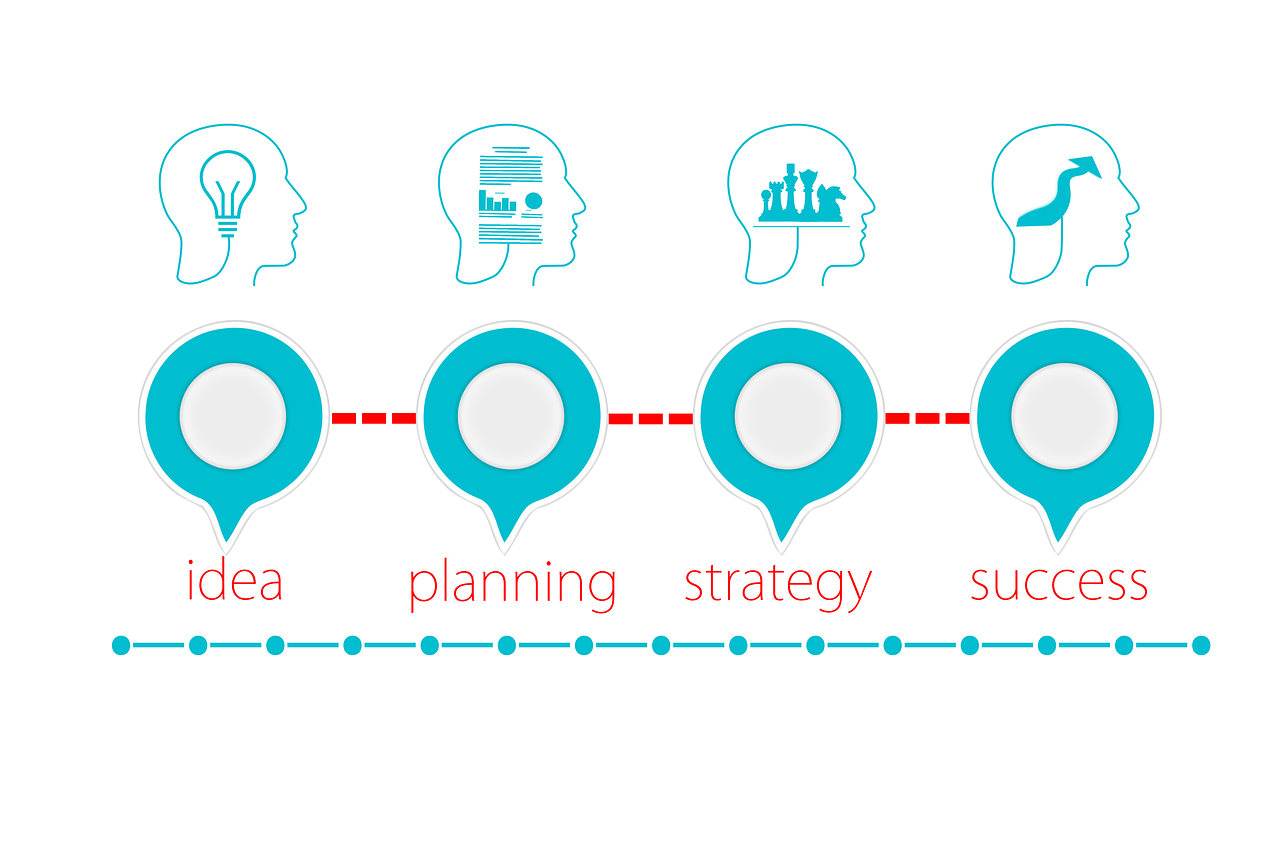
In today’s digital age, having your website on the front page of search results is essential for attracting new customers and growing your business. However, this goal requires a thoughtful and strategic approach to Search Engine Optimization (SEO). Below, we’ll explore actionable steps to help your business rise through the ranks and stand out online.
Conduct Keyword Research
One of the foundational steps in SEO is understanding what keywords your potential customers are using to find services or products like yours. Keywords are the terms people type into search engines, and targeting the right ones can drive significant traffic to your site. Tools like Google Keyword Planner, Ubersuggest, or Ahrefs can help you identify keywords with high search volume and manageable competition. For small businesses, it’s often more effective to focus on long-tail keywords—phrases that are specific and less competitive. For example, instead of targeting a broad term like “graphic design,” aim for something like “affordable graphic design services for small businesses.” Long-tail keywords may have lower search volumes, but they often attract more qualified leads who are ready to engage with your business.
Key Points
- Why it matters: Keywords are the terms your potential customers are typing into search engines.
- Action step: Use tools like Google Keyword Planner to find relevant, high-traffic keywords for your niche (e.g., “custom graphic design Talihina”).
- Pro Tip: Focus on long-tail keywords (e.g., “affordable graphic design services for small businesses”)—these have less competition.
Optimize Your Website
Once you have your target keywords, the next step is to optimize your website. This includes incorporating those keywords naturally into your website’s titles, headers, meta descriptions, and body content. Search engines also favor websites with clean and simple navigation, so ensure your visitors can easily find what they’re looking for. Additionally, create clear and engaging calls to action (CTAs) on your site to guide visitors toward making a purchase or contacting you.
Page load speed is another critical factor. Slow-loading websites frustrate users and negatively impact rankings. Compress images, use caching plugins if you’re on platforms like WordPress, and consider upgrading to a faster hosting provider if needed. Tools like Google’s PageSpeed Insights can provide specific recommendations to improve your site’s performance.
Key Points
- On-Page SEO:
- Use keywords naturally in your page titles, headings, meta descriptions, and content.
- Add alt text to your images.
- Make sure your website is mobile-friendly and loads quickly.
- Local SEO:
- Add location keywords like “Talihina” to your content.
- Create a Google Business Profile and keep it updated with your services, hours, and reviews.
Publish High-Quality Content
Creating valuable and engaging content is one of the most effective ways to attract visitors and improve your SEO. Google rewards websites that provide useful information to users, so invest time in writing blog posts, creating infographics, and producing videos that address your audience’s needs. For instance, if you run a graphic design business, you could write articles about “Top 5 Graphic Design Trends for Small Businesses” or “How to Choose the Right Color Palette for Your Brand.”
The key is to provide answers to the questions your target audience is asking while naturally incorporating your keywords into the content. Regularly updating your content also signals to search engines that your site is active and relevant.
Key Points
- Why it works: Google rewards sites that provide valuable, engaging content.
- Action steps:
- Start a blog and write about topics your audience cares about (e.g., “Top 5 Graphic Design Trends for Small Businesses”).
- Use visuals like infographics and videos to boost engagement.
- Keep your content updated regularly.
Optimize for Local SEO
If your business serves a specific geographic area, local SEO is a must. Start by creating or claiming your Google Business Profile, ensuring it’s complete with your business name, address, phone number, and website. Include high-quality photos and keep your business hours up to date. Encourage satisfied customers to leave reviews, as positive ratings can boost your visibility in local search results.
In addition to Google, list your business on other online directories like Yelp and Bing Places. Make sure your information is consistent across all platforms to avoid confusing potential customers or search engines.
Key Points
- Why it matters: Local search optimization is critical for small businesses like yours.
- Action steps:
- Create or claim your Google Business Profile and optimize it with your address, phone number, website, and services.
- Encourage customers to leave reviews on Google.
- Add your business to online directories like Yelp and Bing Places.
Leverage Social Media
Social media doesn’t directly impact SEO rankings, but it can drive traffic to your site and increase brand awareness. Share your blog posts, special offers, and updates on platforms where your target audience is most active, such as Facebook, Instagram, or LinkedIn. Include links back to your website in your social profiles and posts to create additional pathways for users to find you.
Engagement is key on social media, so respond to comments, answer questions, and interact with your followers. This not only builds trust but also increases the likelihood that your audience will share your content, further expanding your reach.
Key Points
- Why it helps: Social signals can indirectly boost your SEO.
- Action steps:
- Share your content on Facebook, Instagram, or LinkedIn, depending on where your audience hangs out.
- Engage with your followers by answering questions or commenting on their posts.
- Link back to your website in your social profiles.
Build Backlinks
Backlinks—links from other websites to yours—are one of the most influential factors in SEO. They act as endorsements, signaling to search engines that your website is credible and valuable. Start by creating shareable content that others in your industry might link to, such as guides, case studies, or infographics.
You can also actively seek backlinks by writing guest posts for reputable blogs in your niche or partnering with local businesses that can link to your site. Avoid low-quality backlinks from spammy sites, as these can harm your rankings.
Key Points
- Why it’s powerful: Backlinks (links from other sites to yours) show search engines that your site is credible.
- Action steps:
- Write guest posts for relevant blogs.
- Partner with local businesses or influencers who can link to your site.
- Get listed in niche directories related to design or marketing.
Prioritize Mobile Friendliness
With more than half of all internet traffic coming from mobile devices, having a mobile-friendly website is non-negotiable. Responsive design ensures your site looks and functions well on all screen sizes, from smartphones to desktops. Google’s Mobile-Friendly Test is a great tool to check if your site meets mobile usability standards. Simplify navigation, ensure text is easy to read, and avoid elements that require horizontal scrolling or zooming.
Key Points
- Why it’s critical: Over 60% of searches come from mobile devices.
- Action steps:
- Use responsive design so your site looks great on all screen sizes.
- Test your site’s mobile usability with Google’s Mobile-Friendly Test.
Use Schema Markup
Schema markup is a type of code that helps search engines understand your website’s content more clearly. Adding schema to your site can result in rich search results, such as star ratings, FAQs, or business details displayed directly in search results. These enhanced listings not only improve visibility but also increase the likelihood of users clicking through to your site.
Key Points
- Why it helps: Schema code helps search engines understand your content better, often resulting in rich results (like star ratings or FAQs).
- Action steps:
- Add schema for reviews, FAQs, or local business info using a generator like Schema.org.
Invest in Paid Ads
While SEO is a long-term strategy, running paid ads like Google Ads can provide immediate visibility on the front page of search results. This is especially useful for competitive keywords. Set a budget, focus on geo-targeting to reach local customers, and monitor your campaigns to ensure you’re getting the best return on investment.
Key Points
- Why it’s a shortcut: While SEO takes time, paid ads (like Google Ads) can get you instant front-page visibility.
- Action steps:
- Set a budget and bid on your top-performing keywords.
- Use geo-targeting to reach people near your business.
- Monitor and tweak campaigns for the best ROI.
Monitor and Adjust Your Strategy
SEO is an ongoing process, not a one-time task. Regularly monitor your website’s performance using tools like Google Analytics and Search Console. Track which keywords and pages are driving traffic and adjust your strategy accordingly. Stay informed about algorithm updates by following reputable SEO blogs like Moz or Neil Patel to ensure your site remains competitive.
Key Points
- Why it matters: SEO is not a set-it-and-forget-it task.
- Action steps:
- Use tools like Google Analytics and Search Console to track your performance.
- Check which keywords are driving traffic and optimize further.
- Stay up-to-date with algorithm changes by following SEO blogs like Moz or Neil Patel.
Speed Up Your Website
- Why it matters: Google prioritizes fast-loading websites.
- Action steps:
- Compress images and use caching plugins (e.g., WP Rocket for WordPress).
- Test your site’s speed using PageSpeed Insights and make recommended fixes.
- Switch to a faster hosting provider if necessary.
By combining these strategies, you can improve your website’s rankings and attract more visitors to your business. While SEO takes time and effort, the rewards—increased visibility, higher traffic, and more conversions—are well worth it. Start implementing these tips today, and watch your website climb to the top of the search results.
Our Services

































